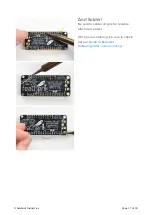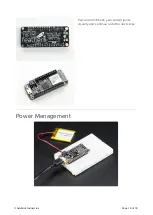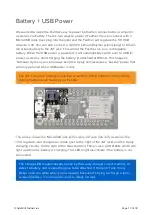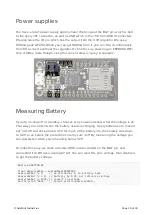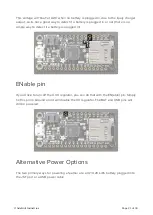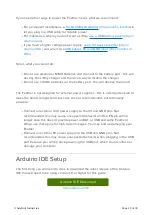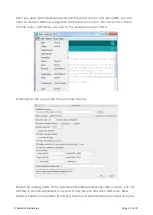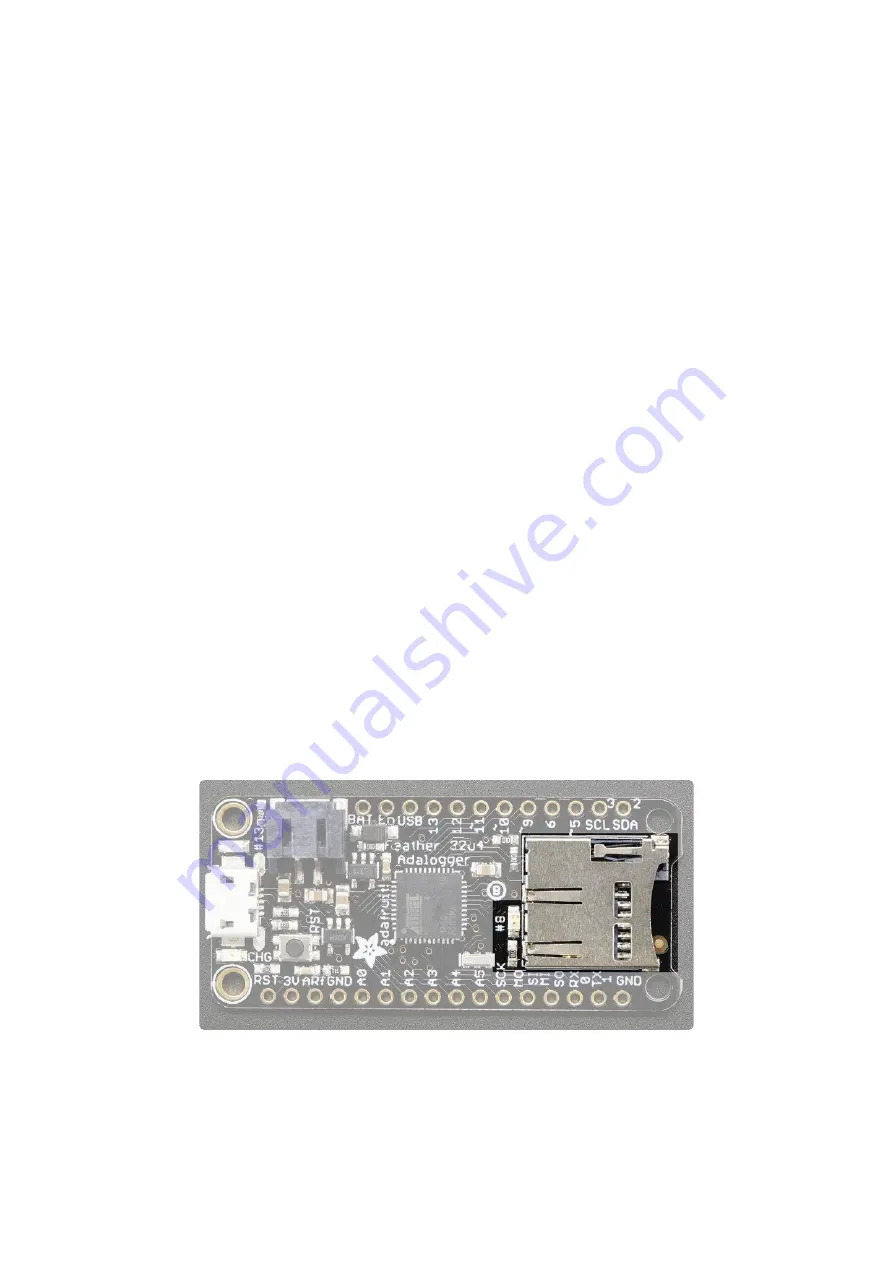
#2 / SDA - GPIO #2, also the I2C (Wire) data pin. There's no pull up on this pin
by default so when using with I2C, you may need a 2.2K-10K pullup. Also
Interrupt #1
#3 / SCL - GPIO #3, also the I2C (Wire) clock pin. There's no pull up on this pin
by default so when using with I2C, you may need a 2.2K-10K pullup. Can also do
PWM output and act as Interrupt #0.
#5 - GPIO #5, can also do PWM output
#6 - GPIO #6, can also do PWM output and analog input A7
#9 - GPIO #9, also analog input A9 and can do PWM output. This analog input is
connected to a voltage divider for the lipoly battery so be aware that this pin
naturally 'sits' at around 2VDC due to the resistor divider
#10 - GPIO #10, also analog input A10 and can do PWM output.
#11 - GPIO #11, can do PWM output.
#12 - GPIO #12, also analog input A11
#13 - GPIO #13, can do PWM output and is connected to the red LED next to the
USB jack
A0 thru A5 - These are each analog input as well as digital I/O pins.
SCK/MOSI/MISO - These are the hardware SPI pins, used by the microSD card
too! You can use them as everyday GPIO pins if the SD card is not inserted.
However, we really recommend keeping them free as they should be kept
available for the SD. If they are used, make sure its with a device that will kindly
share the SPI bus! Also used to reprogram the chip with an AVR programmer if
you need.
Micro SD Card + Green LED
Since not all pins can be brought out to breakouts, due to the small size of the
Feather, we use these to control the SD card!
#4 - used as the MicroSD card CS (chip select) pin
•
•
•
•
•
•
•
•
•
•
•
•
©Adafruit Industries
Page 8 of 39

















